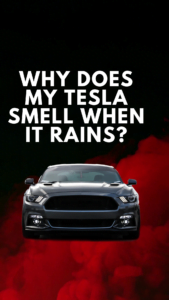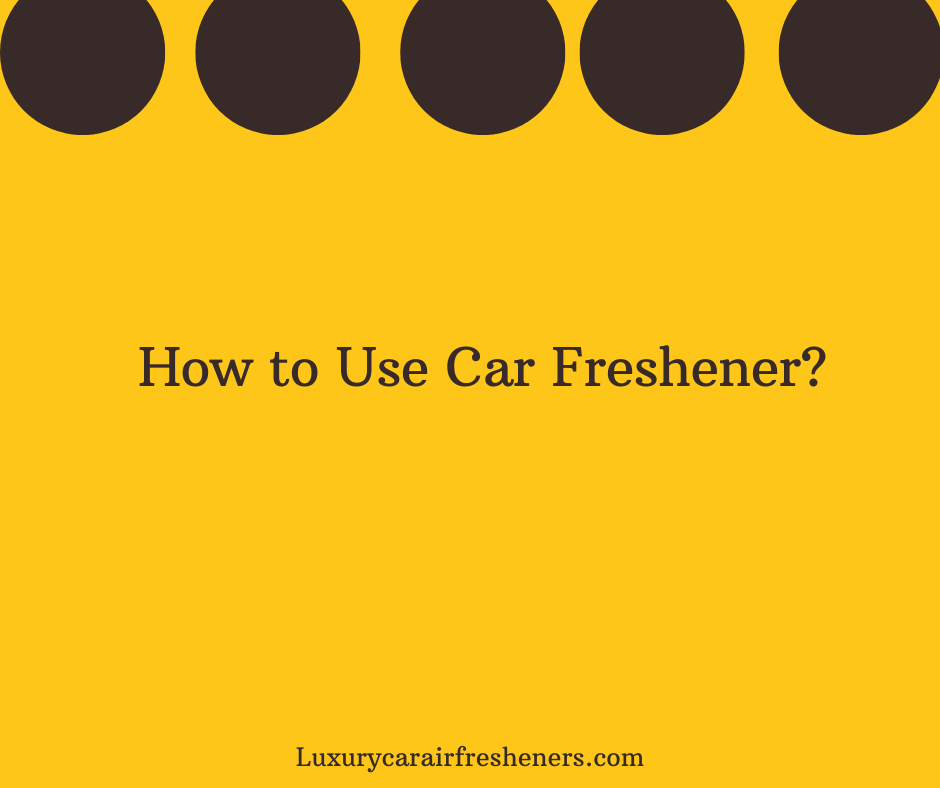Why Does My Tesla Smell When It Rains? The ‘Wet Sock’ Mystery Solved
You step into your Tesla, a marvel of modern engineering. The silent hum of the electric motor, the giant, futuristic screen, the minimalist interior—it all feels like you’re piloting a spaceship. Then you turn on the climate control, especially on a humid day or after it rains, and you’re hit with it: the unmistakable, musty odor of old, wet socks. Or maybe it’s more like sour vinegar or a damp basement. Whatever you call it, it’s a primitive smell that has no place in a car of the future.
If you’re reading this, you know exactly what I’m talking about. You’re not alone, and your car isn’t broken. As a long-time Tesla owner who experienced this exact issue, I went down the research rabbit hole, talked with service techs, and experimented with solutions. This is a well-known phenomenon in the Tesla community, and the good news is that it’s completely fixable. This guide will walk you through exactly why it happens and provide a permanent, step-by-step solution to get your Tesla smelling factory-fresh again.
The Root Cause: Unmasking the “Tesla Stink”
Before we can fix the problem, we need to understand what’s actually causing it. The smell isn’t coming from your seats or your carpets. It’s originating deep within your car’s Heating, Ventilation, and Air Conditioning (HVAC) system.
The Science Behind the Smell: A Perfect Storm of Moisture and Darkness
Every car’s air conditioning system works by passing warm, humid cabin air over a very cold set of coils called an evaporator. As the air cools, the moisture in it condenses onto these coils, just like water droplets forming on a cold glass of iced tea. This water then typically drains out from under the car.
Here’s the problem: The evaporator coils are located in a dark, enclosed box deep within your dashboard. After you park your car and turn off the AC, some residual moisture can remain on the coils and in the surrounding area. This dark, damp environment is the absolute perfect breeding ground for naturally occurring mold, mildew, and bacteria. Over time, a biofilm of this organic gunk builds up on the coils. When you turn your fan on, you’re blowing air directly over this science experiment, forcing that musty, sour smell directly into the cabin.
While this can happen in any car, the design of the Tesla Model 3 and Model Y’s HVAC system seems to make it particularly susceptible to trapping this moisture, leading to the problem being more pronounced and widespread among owners.
The Permanent Fix: A Step-by-Step Guide to Eliminating the AC Smell
Masking the smell with an air freshener won’t work long-term. You need to go to the source and kill the microbial growth. This is a straightforward DIY job that most owners can complete in about an hour. It involves two main goals: thoroughly cleaning the evaporator coils and replacing the cabin air filters, which have likely absorbed the odor.
Part 1: Gather Your Supplies
You’ll need a few specific items to do this job correctly. Here are my top recommendations, all available on Amazon.

1. Replacement Cabin Air Filters
These are essential. Your old filters are contaminated. Look for a pack of two with activated carbon for better odor absorption.
Check Price on Amazon
2. Evaporator Foam Cleaner
This is the magic bullet. A foaming cleaner with a long application hose is crucial for reaching the coils deep in the dash.
Check Price on Amazon
3. Trim Removal Tool Kit (Optional)
While not strictly necessary, these plastic pry tools make removing interior panels much easier and prevent scratching.
Check Price on AmazonPart 2: The Cleaning Procedure (Model 3 & Model Y)
This process is for the Tesla Model 3 and Y, where the filters are accessed from the front passenger footwell. The procedure is similar for other models, but panel locations may vary.
- Turn Off Climate Control: On your Tesla’s screen, ensure the climate system is completely off.
- Remove the Footwell Panels: In the passenger footwell, you’ll need to remove two panels. The first is a carpeted vertical panel on the right side of the center console. It’s held in by clips and pulls straight out. The second is the plastic panel underneath the glove box, held in by a few clips and one T20 Torx screw.
- Access the Filter Cover: With the panels removed, you’ll see a small door with another T20 Torx screw. This is the cabin air filter cover. Remove the screw and the cover.
- Remove the Old Filters: You’ll see the edges of the two air filters stacked on top of each other. Carefully pull them out one by one. Take note of their orientation and the airflow direction arrows. Prepare for them to be dirty and possibly damp.
- THE CRITICAL STEP: Clean the Evaporator: Take your can of foaming evaporator cleaner. Attach the long application hose. You need to snake this hose as deep as possible into the empty filter cavity, aiming upwards and towards the center of the car where the evaporator core sits.
- Deploy the Foam: Dispense about half to three-quarters of the can. The goal is to completely coat the evaporator coils in the antibacterial, cleaning foam. You may see some foam come out of the opening; this is normal.
- Let It Work: The foam will expand, clean the coils, and then liquefy as it breaks down the grime. It will then exit the car through the AC drain tube. Let the car sit for 20-30 minutes as instructed on the cleaner’s can. You may see a small puddle of dirty liquid under your car—this is a good sign!
- Install New Filters: Once the waiting time is up, carefully install your new cabin air filters. Ensure the airflow arrows are pointing in the correct direction (towards the rear of the car). Slide the top one in first, then the bottom.
- Reassemble and Flush: Re-install the filter cover, panels, and screws. Now, turn the car’s climate control back on. Turn the fan on high speed with the AC off and windows down for 5-10 minutes. This will blow out any remaining cleaner and fully dry the system. You may notice a chemical smell from the cleaner initially; this will dissipate quickly.
Prevention: How to Keep the Smell From Ever Coming Back
You’ve done the hard work; now let’s make sure you never have to do it again. Prevention is all about keeping the evaporator coils dry.
- Dry the Coils Before Parking: This is the single most effective habit. About 5 minutes before you reach your destination, turn the AC button OFF on your screen but leave the fan blowing. This allows air to pass over the wet coils and dry them out, robbing mildew of the moisture it needs to grow.
- Use Cabin Overheat Protection: In your Tesla’s settings, enable Cabin Overheat Protection *without* AC. This will periodically run the fan on hot days, circulating air and helping to keep the HVAC system dry.
- Change Your Filters Regularly: Don’t wait for the smell to return. Change your cabin air filters at least once a year, or every six months if you live in a particularly humid climate like the Southeast U.S.
- Keep the Frunk Cowl Clean: The air intake for your HVAC system is located under the hood near the windshield. Keep this area clear of leaves, pine needles, and other debris that can trap moisture and decompose.
Temporary Fixes vs. A Permanent Solution
It can be tempting to just hang an air freshener from your mirror and call it a day. But it’s crucial to understand that this is like using cologne to fix a broken sewer pipe. The underlying problem—the bacterial growth—is still there and will only get worse.
While a deep cleaning is the only real fix, a quality air freshener can certainly make your car more pleasant while you wait for your cleaning supplies to arrive from Amazon. If you’re looking for a stop-gap measure, we have a comprehensive guide on what are the best car air fresheners. Just remember that their effectiveness is limited. You will find yourself replacing them constantly, and as our article on how long do car air fresheners last explains, their lifespan is finite. Treating the root cause is always more effective than masking the symptom, just as the best car air fresheners for smokers can’t remove the actual tar from a headliner, a simple freshener can’t kill the mildew deep inside your AC system.
Frequently Asked Questions
Q: Is this musty smell from my Tesla’s AC harmful or toxic?
A: For most people, it’s just an unpleasant nuisance. However, the smell is caused by mold and mildew, which can release spores into the air. For individuals with allergies, asthma, or compromised immune systems, prolonged exposure could potentially trigger respiratory issues or allergic reactions. Cleaning it out is always the healthiest option.
Q: Will Tesla Service fix this under warranty?
A: This is a gray area. Because the growth of mold/mildew is considered an environmental factor rather than a defect in parts, the cleaning service is often not covered under warranty and can be costly (typically $150-$250). That’s why the DIY solution is so popular and cost-effective.
Q: I have the Bio-weapon Defense Mode HEPA filter. Will that prevent the smell?
A: Not entirely. The HEPA filter is incredibly effective at cleaning the air that *enters* the cabin. However, the smell originates *after* the filter, on the evaporator coils themselves. The moisture buildup can still occur, so while your air will be cleaner, the source of the smell can still develop.
Q: I’m not comfortable doing this myself. What should I do?
A: If you’re not comfortable with the DIY approach, your best bet is to schedule a service appointment with Tesla. Specifically request the “AC Evaporator Cleaning” service. Alternatively, some high-end independent auto detailers are familiar with this procedure and may offer it as a service.
Enjoy Your Fresh, Future-Proofed Tesla
Congratulations! By following these steps, you’ve not only eliminated that awful smell but also gained a deeper understanding of how your car works. You’ve tackled one of the few quirks of Tesla ownership head-on and have the knowledge to prevent it for good. Now you can get back to enjoying the silent, clean, and—most importantly—fresh-smelling experience of driving your Tesla.


